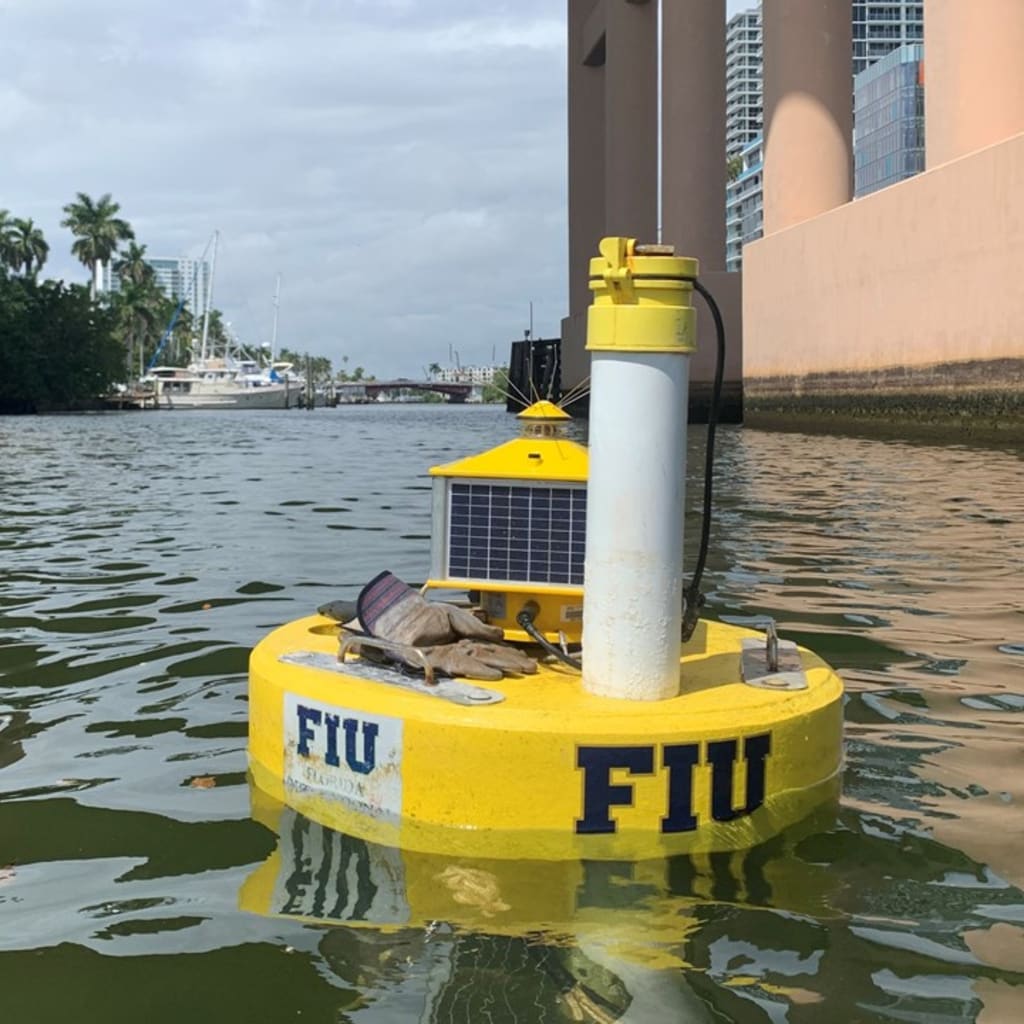By Kenneth Setzer MA ’97
Longtime FIU supporter Elliot Stone cares deeply about the health of the environment. The founder of Royal Castle Builders, LLC, Stone is a Miami native who sees the powerful, positive results of serving his community.
That’s why when FIU’s Institute of Environment needed to add a buoy to its Biscayne Bay and Florida Bay monitoring system, Stone stepped in with a $50,000 gift.
“The work that FIU is doing to understand and protect our local environment is uniquely valuable,” says Stone. “Whether in Biscayne Bay, the Keys, or the Everglades, FIU is leading the way for us to live harmoniously in these very special ecosystems. I am honored to do a small part in furtherance of this all important mission.”
The specialized little yellow buoys don’t just float in one place to guide ships or mark boating lanes. They have work to do, and actively collect, analyze and transmit real-time data on water conditions back to FIU as part of the university’s efforts to address, and redress, environmental contamination.
In recognition of Stone’s generosity, FIU is naming the buoy the Royal Castle Companies & Singer Management LLC, Buoy.
An advocate of the university, Stone also supports FIU athletics and the Jewish Museum of Florida–FIU, among several other areas at the university. He is also a member of the FIU Foundation Board of Directors and established the Senator Richard B. Stone Public Policy Scholarship Endowment to help students interested in serving the public. The endowment honors his late father, who served Florida as a U.S. senator and the nation as an ambassador.
The buoy — made possible by Stone’s gift — will play a crucial role in FIU’s efforts to protect and preserve the Biscayne Bay and Florida Bay.
“Buoys provide us with real-time data continuously,” says Todd Crowl, director of FIU’s Institute of Environment. “Because the bay has so many inputs [canals, etc.] potentially bringing in contaminants and pollutants, we need a large network of these ‘sentinel’ buoys to be our eyes.”
The buoy monitoring system is part of the larger overall Institute of Environment’s CREST Center for Aquatic Chemistry and Environment’s mission to monitor and address the ecosystem’s responses to man-made and natural stressors in South Florida’s waters such as harmful algal blooms like red tide. Funded by the National Science Foundation, the CREST Center for Aquatic Chemistry and Environment is one of less than 30 such NSF-funded centers in the nation.
“To fully understand where our major pollutants are coming from, we have to heavily instrument Biscayne Bay,” Crowl explains. “Having individuals like Elliot donate funds to purchase an additional buoy to the five we currently operate shows that the community is aware of these issues and wants to help us protect our bay.”

